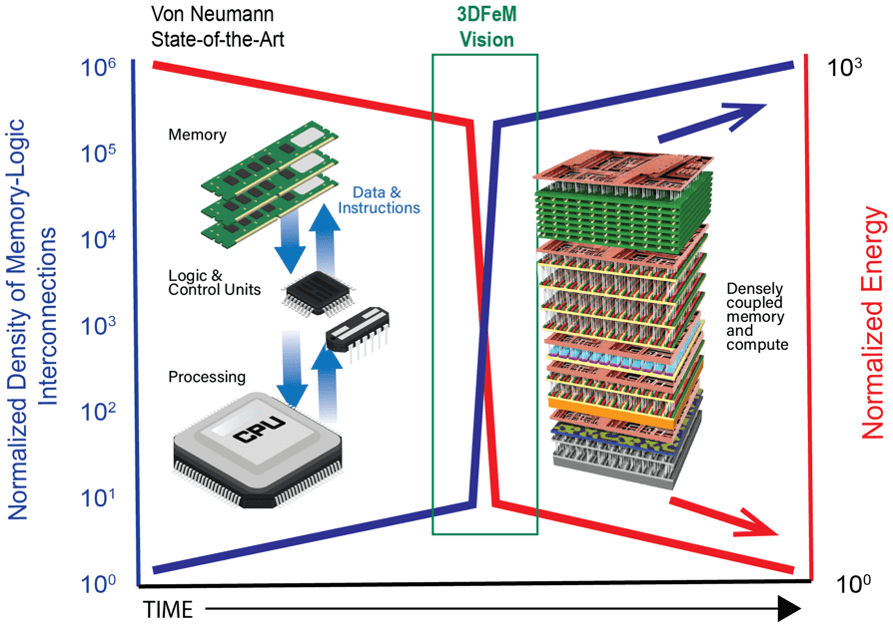
MISSION
3DFeM will exploit the 3rd dimension in microelectronics for functions beyond interconnects by incorporating low-power, non-volatile ferroelectric memory. Ferroelectric materials and new devices will be co-designed, integrated reliably, and densely interconnected with logic to enable low-power, 3D non-von Neumann computation.
VISION

OBJECTIVES
3DFeM will: (i) design ferroelectricity in new host crystal structures, (ii) tailor the coercive voltages through engineering emergent nanoscale inhomogeneity in scaled ultra-thin films, (iii) deposit ferroelectric materials with ancillary electronics at low temperatures at wafer scale, (iv) characterize materials at previously inaccessible time and length scales, and (v) demonstrate device functionality.
3DFeM GUIDING QUESTIONS
- How can ferroelectricity be obtained in 3D-integration-enabling materials?
- How can materials be made far from equilibrium (an essential component of BEOL integration) using synthesis routes consistent with 3D integration and aggressive scaling?
- How can new devices leverage the cooperative nature of ferroelectricity, and can the cooperative nature of ferroelectricity be tuned for specific device requirements?
- Can new properties, such as ferroelectric quantum critical points; superconductivity; and spin, charge, or orbital ordering, enable novel devices?
- How can intrinsic or engineered properties of ferroelectric materials and devices enable novel compute-in-memory processors?